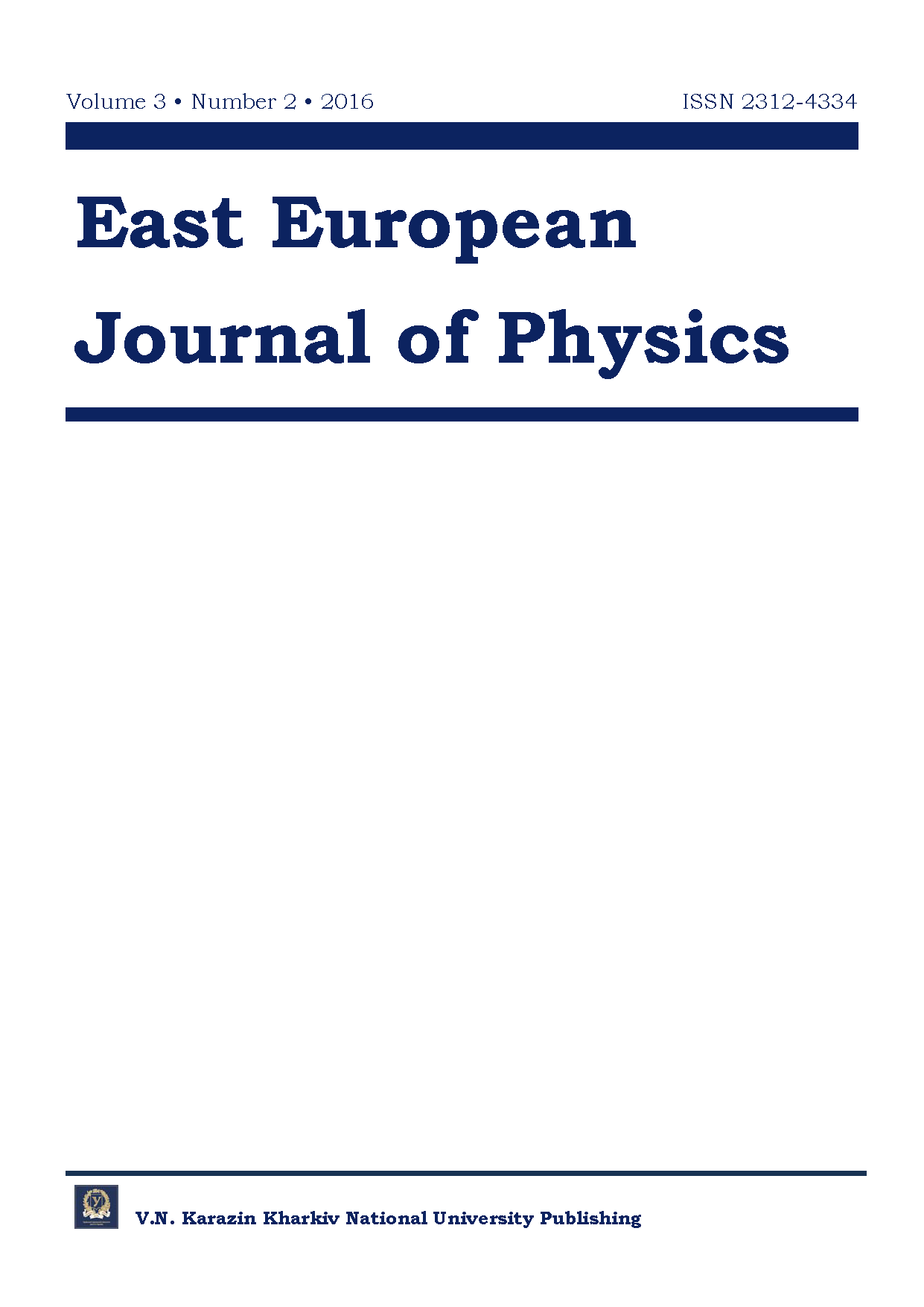EFFECT OF CARBON ON PHYSICAL AND STRUCTURAL PROPERTIES OF FеB IRON MONOBORIDE
Abstract
In this paper we study effect of carbon on structural and physical properties of FeB iron monoboride in Fe-B system alloys with carbon content of 0,05-0,90% (wt.) and boron content of 9,0-15,0% (wt.), the rest is iron. To determine the physical properties of alloys we use microstructure analysis, X-ray microanalysis and X-ray structural analysis. Carbon doping of FeВ iron monoboride leads to a feeble lattice strain and effects on the physical characteristics of boride. Using the quasi-chemical method we estimate the temperature dependence of the boride free energy and carbon solubility limit in FeB monoboride. Carbon can substitute up to 4% of
boron atoms in FeB phase depending on the temperature. At high temperatures the carbon solubility in this phase increases. The obtained estimated data is in good agreement with experiment.
Downloads
References
Lyakishev N.P., Pliner Yu.L., Lappo S.I. Borsoderzhaschiye stali i splavy. – Moscow: Metallurgiya, 1986. – 191 p.
Samsonov G.V., Serebryakova T.I., Neronov V.A. Boridy. – Moscow: Atomizdat, 1999. – 220 p.
DeYoung D.B. and Barnes R.G. A Mössbauer effect study of 57Fe in transition metal monoborides // J. Chem. Phys. – 1975. – Vol. 62. – P. 1726-1739.
Rades S., Kornowski A., Weller H., Albert B. Wet-Chemical Synthesis of Nanoscale Iron Boride, XAFS Analysis and Crystallisation to α-FeB // Chem. Phys. Chem. – 2011. – Vol. 12. – P. 1756-1760.
Barinov V.A., Dorofeev G.A., Ovechkin L.V., Elsukov E.P., Ermakov A.E. Structure and magnetic properties of the α-FeB phase obtained by mechanical working // Рhysica status solidi (a). – 1991. – Vol. 123. – P. 527-534.
Portnoy K.I., Levinskaya M.Kh., Romashov V.M. Diagramma sostoyaniya sistemy zhelezo-bor // Poroshkovaya metallurgiya (Powder metallurgy). – 1969. – Issue 8 (80). – P. 66-69.
Pomelnikova A.S., Shipko M.N., Stepovich M.A. Osobennosti strukturnykh prevrascheniy, proiskhodyaschikh pri obrazovanii kristallicheskoy struktury boridov v stalyakh // Poverkhnost. Rentgenovskie, sinkhronnye I neytronnye issledovaniya. – 2011. – No.3. – P. 99-106.
Filonenko N.Yu. Doslidzhennya termodynamichnykh funkcij faz, scho mistyat bor, systemy Fе-B-C // Physics and Chemistry of Solid State. – 2011. – Vol. 12. – No. 2. – P. 370-374.
Tverdokhlebova S.V. Spektrometriya borsoderzhaschikh splavov // Visnyk Dnipropetrovskogo universytety. Seria «Fizyka. Radioelektronika». – 2007. – Issue 14. – No. 12/1. – P. 100-104.
Filonenko N.Yu., Bereza E.Yu., Bezrukavaya O.G. Vliyanie ugleroda na fazovyj sostav i fazovye prevrascheniya v splavah sistemy Fe-В // Problems of Atomic Science and Technology. – 2013. – No.5(87). – P. 168-171.
Matyushenko N.N. Krystallicheskie struktury dvoynykh soedinenij. –Мoscow: Metallurgiya, 1960. – 301 p.
Kuzma Yu.B. Kristallokhimiya boridov. – Kyiv: Vyscha shkola, 1983. – 159 p.
Shubert K. Kristallicheskie struktury dvukhkomponentnykh faz. – Мoscow: Metallurgiya, 1971. – 531 p.
Narai-Sabo I. Neorganicheskaya kristallokhimiya. – Izdatelstvo Akademii nauk Vengrii, 1969. – 564 p.
Bereza O.Yu., Filonenko N.Yu., Baskevich O.S. Doslidzhennya vplyvu energii zvyazku na utvorennya bormistyachikh faz u splavakh systemy Fе-B-C // Physics and Chemistry of Solid State. – 2012. – Vol. 13. – No.3. – P. 968-973.
Matysina Z.A., Milyan M.I. Teoriya rastvorimosti v uporyadochennykh fazakh. – Dnepropetrovsk: DGU, 1991. – 180 p.
Authors who publish with this journal agree to the following terms:
- Authors retain copyright and grant the journal right of first publication with the work simultaneously licensed under a Creative Commons Attribution License that allows others to share the work with an acknowledgment of the work's authorship and initial publication in this journal.
- Authors are able to enter into separate, additional contractual arrangements for the non-exclusive distribution of the journal's published version of the work (e.g., post it to an institutional repository or publish it in a book), with an acknowledgment of its initial publication in this journal.
- Authors are permitted and encouraged to post their work online (e.g., in institutional repositories or on their website) prior to and during the submission process, as it can lead to productive exchanges, as well as earlier and greater citation of published work (See The Effect of Open Access).








